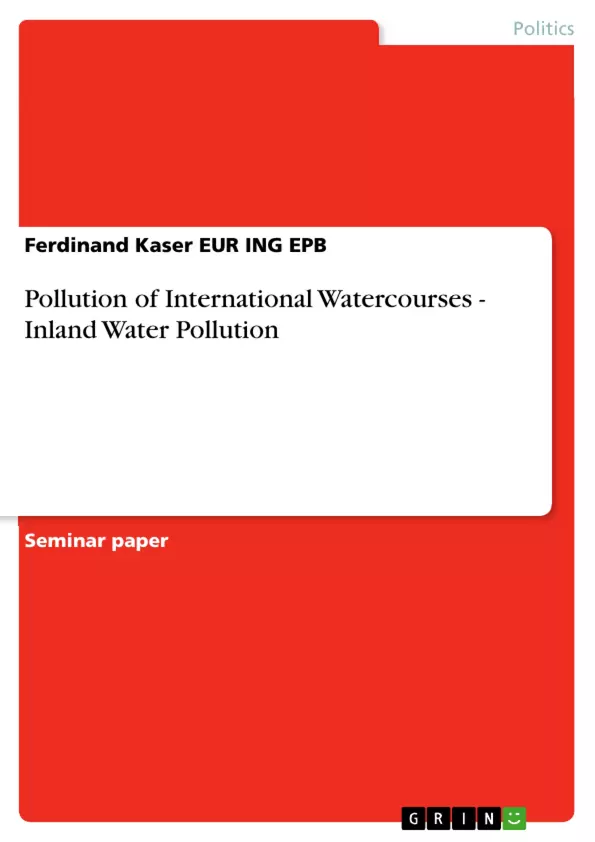Inland water pollution is not a recent phenomena, and is documented throughout history.
The general rules and law have therefore a long lasting tradition, but were seriously redrafted in the 20th century. Upon the Harmon Doctrin a considerable international standard of soft law is under development within the UN System as well as at a multilateral and a bilateral basis. Beside that a whole set of academic principles has been developed.
Due to this developement, there a a series of principles in the Agenda 21, the Helsinki rules, Helsinki Convention and the Council of Europe.
Examples of regional agreements in North America and Western and Central Europe are briefly described.
As regards the EU the situation presented does not consider the European Framework Directive Water, but the situation leading to the development of of this legal framework.
Inhaltsverzeichnis (Table of Contents)
- Introduction
- Rules and laws dealing with the problem
- Soft law
- Helsinki rules about the use of water from international watercourses
- UN Convention on the protection and use of transboundary watercourses and international lakes (Helsinki Convention).
- Convention for the protection of international watercourses of the Council of Europe
- Basic rules of the ECE about the prevention and battle against water pollution including border- crossing pollution …………
- Examples of bilateral and multilateral agreements on watercourses and drainage basins
- Declaration about the cooperation of the Danube States in questions of water management, especially the protection of the water of River Danube against pollution
- Lake Constance
- River Rhine
- Canada and USA
- Legislation of the European Community
- Conclusions
- Literature
Zielsetzung und Themenschwerpunkte (Objectives and Key Themes)
This work aims to provide a comprehensive overview of the legal framework surrounding pollution of international watercourses, specifically focusing on inland water pollution. It explores the historical development of the issue, examines relevant legal principles and international agreements, and discusses the impact of pollution on both national and international levels.
- The Evolution of International Water Law and the Shift from Territorial Sovereignty to Shared Resource Management
- The Role of Soft Law and International Agreements in Regulating Transboundary Water Pollution
- The Impact of Human Activities on Inland Water Quality and Ecosystems
- The Importance of Sustainable Water Management and the Integration of Environmental Considerations in Development
- The Challenges of Implementing Effective Pollution Control Measures at the International Level
Zusammenfassung der Kapitel (Chapter Summaries)
The introduction delves into the history of water pollution, highlighting its growing importance in the modern era due to factors such as population growth, industrialization, and urbanization. It emphasizes the transboundary nature of the problem and defines water pollution as changes in water quality resulting from human activities.
Chapter two explores the legal framework governing water pollution, tracing the evolution of international water law from the principle of absolute territorial sovereignty to the concept of shared resources and the responsibility of states for transboundary environmental damage. It examines various soft law instruments, including the Helsinki Rules and the UN Convention on Transboundary Watercourses, as well as bilateral and multilateral agreements addressing specific water bodies, such as the River Danube and Lake Constance.
Schlüsselwörter (Keywords)
The key focus of this work lies in the intersection of international law, environmental protection, and water resource management. This includes crucial terms like transboundary water pollution, riparian states, shared resources, sustainable development, the Helsinki Rules, international agreements, and the evolution of international water law. The text explores the legal framework surrounding inland water pollution and its impact on the environment, focusing on the responsibilities of states in mitigating the detrimental effects of pollution on shared water resources.
- Quote paper
- Mag. Ing. Ferdinand Kaser EUR ING EPB (Author), 1994, Pollution of International Watercourses - Inland Water Pollution, Munich, GRIN Verlag, https://www.grin.com/document/211765



